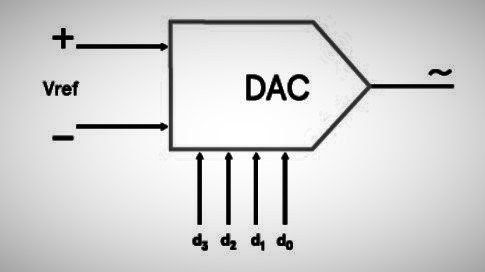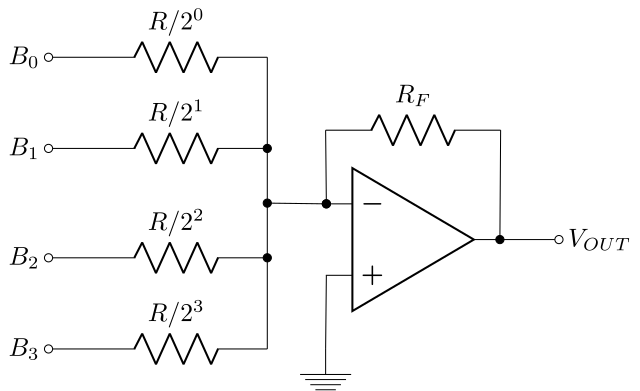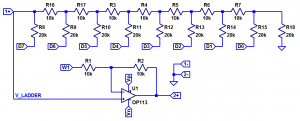Contents
· Digital-to-analog Converter (DAC)
· Working of a digital to analog converter
· Electrical Symbol of digital-to-analog converter
· Types of digital-to-analog converter
· Applications of digital-to-analog converter
· Advantages and Disadvantages of Digital to Analog Converter (DAC)
Digital to Analog Converter (DAC)
A digital to analog converter is an electronic device that does a conversion operation. As the name suggests, it converts a digital input signal into an analog output signal. Digital signals such as digitized music can be converted into analog sounds using a digital to analog converter. It is one of the types of data converters.
A digital to analog converter is also known as DAC, d to a converter, dac converter, D / A converter, etc. An analog to digital converter (ADC) does the reverse operation. A DAC is required almost every time in the circuit whenever there is a need for ADC.
Know about Analog to digital converter!
Working of a digital to analog converter
A digital to analog converter is an equipment working for digital to analog conversion. A digital signal is defined as the discrete in time and discrete in the amplitude signal. At the same time, an analog signal is defined as the time-continuous and continuous amplitude signal. A DAC covert a fixed-point binary number (abstract adequate precision number) into a physical measurement.
The transformation has several steps in it. A typical digital to analog converter converts abstract data into conceptual sequences of impulses. Then the series is processed using a reconstruction filter.
A digital to analog converter works based on the Nyquist-Shannon sampling theorem. It states that – an input signal can be recovered from its sampled output if the sampling rate is twice greater than or equal to the highest frequency component present in the input signal.
There are several parameters to measure the performance of a digital to analog converter. The bandwidth of the output signal, the signal to noise ratio are some of the parameters.
Electrical Symbol of a DAC
The below symbol represents a digital to analog converter.

Types of digital to analog converters
The conversion of digital input bits into analog signals can be achieved through different processes. Let’s discuss some of the types –
A. DAC using the weighted resistors method
Let’s get started with a 4-bit digital number. We will convert it into analog. Let the digital number – B3B2B1B0

The decimal equivalent will be – N = 23B3+22B2+21B2+20B0
Here B3 is the most significant digit (MSB) whereas, the B0 is the least significant digit (LSB). The circuit here operates to produce an analog output signal weighted according to the bit positions and add them together.
In the circuit, logic voltages, which represents the binary input, is applied to the corresponding resistors using switches. The resistors of the circuits (except feedback resistor Rf) are connected in a weighted way so that the successive ratio is 2. That is – R0 / R1 = R1 / R2 = R2 / R3 = 2. The resistors are also inversely proportional to their numerical significance of the appropriate binary bit.
When the binary bit is zero (0), the switch is turned ON and connected to the ground. If the binary bit is one (1), the controller is closed and connected to the reference voltage VR.
The current i which will be supplied to the non-inverting terminal is –
i = VR * ( B3 / R3 + B2 / R2 + B1 / R1 + B0 / R0 )
Substituting the values of R0, R1, R2, R3 we get –
i = (VR / R) * (23B3+22B2+21B2+20B0 )
Since G is virtual ground, the output voltage vo =
Vo = -i * Rf = – ( VR / R ) * Rf * ( 23B3+22B2+21B2+20B0 )
Now we can observe that the output voltage is proportionate to the numerical value of the binary digits.
The DAC accuracy depends on the resistor’s ratios and their ability to track each other when the temperature varies.
This type of digital to analog converters has some disadvantages. It requires a wide range of resistors to construct the converter if the binary input consists of a large number of bits. The R-2R ladder type converter overcomes this disadvantage.
B. R – 2R Ladder Type DAC
A ladder of resistances can convert a binary word into analog. This type of DACs is known as R – 2R Ladder-type converters.

To understand the circuit’s operation, let us assume that the terminal B0 is connected to VR, and the rest of the terminals (B1, B2, B3) are connected to the ground. The resulting figure is shown in the circuit –
We apply Thevenin’s theorem to the nodes a0, a1, a2, a3 concerning ground. We get the Thevenin’s equivalent circuit, which is further shown in the below course –
The equivalent source has a voltage of VR/16 in series with a resistance 3R.
Again, if the terminal B1 is connected to Vr and the terminals B0, B2, B3 are connected to the ground, then applying Thevenin’s theorem also, it can be shown that the source has a voltage VR /8 in series with a resistance 3R.
Similarly, when B2 is connected with VR and rest inputs are connected to the ground, we will find that the Thevenin’s equivalent circuit has a source voltage of VR / 4 in series with a resistance 3R.
Same for B3’s connection with VR. The equivalent circuit gives the source voltage as VR / 2 and the series resistance of 3R.
The current i obtained by the principle of superposition –
i = ( Vr / 3R ) * ( B0/16 + B1/8 + B2/4 + B3/2 )
Since G is virtual ground, the output voltage vo =
Vo = -i * Rf = – ( VR / R ) * Rf * (B0 / 23 + B1 / 22 + B2 / 21 + B3 / 20 )
The equation comes as –
Vo = -i * Rf = – ( VR / 48R ) * Rf * ( 23B3+22B2+21B2+20B0 )
Here and now we can realize that the output voltage is proportionate to the numerical value of the binary digits. This circuit can easily convert large binary digits as it is easily extensible. All we need to add is additional switches and extra resistors for the ladder.
One of the vital features of a digital to analog converter is that the circuit’s smallest change defines its resolution.
Applications of digital to analog converter
The modern era has a high demand for digitized data. That is why there is an increasing demand for an analog to digital converter. But we have to keep in mind that we use analog signals in our day-to-day life, and the world is analog. So, whenever we need an analog to digital converter, we need a digital to analog converter. Both DACs and ADCs have contributed most to the digital revolution.

Let us take a real-world example to understand their need. Consider a telephone call. At first, the caller starts speaking. The speech is an analog signal, which is changed into a digital signal using an analog to digital converter or ADC. When the digitized signal is transported to the receiver’s end, it again needs to be converted into an analog signal; otherwise, the receiver will not understand the sent data. Here a digital to analog converter serves the purpose.
Audio Processing:
Music and other audios are stored in digitized format in today’s era of digitalization. When we need to hear them in speakers or headphones, then the digitized form must be converted into an analog signal. That is why DACs are found in every device which can play music like – MP3 Music player, DVD player, CD player, Laptops, Mobile Phones, etc.
High-end hi-fi systems use specialized standalone DACs. Similar DACs are found in modern digital speakers such as USB speakers, sound cards, etc.
In voice over IP communications, the source is digitized. Thus a DAC is needed to reconstruct the digitized part into an analog signal.
Video Encoding:
The video encoder system processes a video signal and sends digital signals to ICs.
Digital Display:
The graphic controller typically uses a lookup table to generate signals sent to analog outputs such as RGB signals to drive the display.
Calibration:
A digital to analog converter can provide calibration of dynamic types to increase the test system’s accuracy.
Controlling Motor:
Digital to analog converters are also used in motor control devices where the voltage control signal is required.
DACs are also used in data distribution systems, digital potentiometer, software radio, and many other places.
Advantages and Disadvantages of Digital to Analog Converter (DAC)
Advantages of DAC
As mentioned earlier a digital to analog converter is as important as an Analofg to digital converter, it has too several points to discuss. Every electrical and electronic device has both its advantages and disadvantages. DACs are no exception. Some of its benefits are –
- Large digital – binary inputs can be converted into its analog form easily.
- One of the fastest methods of conversion.
- Simple circuitries to implement.
Disadvantages of DAC
- Circuits use expensive operational amplifiers.
- Some errors like – gain error, offset error, Non-linearity is generally caused by resister employed in the circuit.
- Power dissipation is high.

Hi, I am Sudipta Roy. I have done B. Tech in Electronics. I am an electronics enthusiast and am currently devoted to the field of Electronics and Communications. I have a keen interest in exploring modern technologies such as AI & Machine Learning. My writings are devoted to providing accurate and updated data to all learners. Helping someone in gaining knowledge gives me immense pleasure.
Let’s connect through LinkedIn –